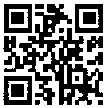My second in the series of reports I have written after completing the IIECT Teacher Training Program in Tokyo run by Ritsuko Nakata. As always feedback and comments are welcome. This workshop was presented by Naoko Saito & Junko Nakamura, entitled: Getting Maximum Results in Reading While Speaking
The primal focus of the second workshop was how to develop the
reading capability of young learners, an integral part of many young learners’ curriculum.
Learning to read is no easy task, especially if you’re limited to 1 hour (or
less) classes once per week, hence the significant importance of building a
solid foundation by learning the English alphabet, the building blocks to
becoming an accomplished reader, and their relation to sounds (or better known
as phonics). From the alphabet we can build onto phonics and then progressing
onto words and eventually sentences. If there is no foundation everything we
build around it will crumble and fall, so it’s very important to get the basic
right so learners don’t fall into bad habits early on. It’s also important to
note that the students should know the meaning of the words and produce them
orally before they attempt reading them. However, even just teaching the basic
phonics sounds can be arduous and time consuming. This lead to the development
of “MAT Phonics” so that students are able to, so they told us, learn all the
sounds of the alphabet in just a few lessons. We were also told that in order
to accomplish this successfully the students must already know how to say the
alphabet correctly.
The “MAT Phonics”
method begins by teaching the vowel sounds in conjunctions with “MAT Vowel Actions”,
these gestures helps young learners remember the short vowel sounds by
replicating the shape formed by the mouth when saying these sounds. Next comes
the consonant sounds. The consonants are split into four sound groups: “ee”,
“e”, “ei” and “Mixed”. Once the consonants are split into their respective
groups we implement something called “Phonics Math”, where we subtract the
common group sound from the letter sound. For example the letter “b” belongs in
the “ee” group and by applying “Phonics Math” we remove the “ee” sound to
achieve the “b” phonic sound. Finally we have built our solid foundation and can
move onto reading words and sentences by using these phonics sounds alongside
some essential key words, some of which cannot be read phonetically (also referred
to as sight words) that the students should already know such as; I, you, he,
her, they, this, that, yes, no etc.
Unfortunately I
have had neither the time nor the opportunity to fully integrate these methods
into my lessons. I have a habit on concentrating too much time on oral
communication and not enough time on reading and writing, which is an aspect of
my teaching that I want and need to change for the benefit of my students. On the
other hand I have tried some of the suggested activities from the workshop,
such as cutting up letters to piece together again and tracing the letters of
the alphabet in the air with our eyes closed. I am very interested using the
“Phonics Math” method but I am slightly weary that the concept may be a bit too
difficult to grasp for some of the students. I guess there is only one way to
find out.
Although I did find
this workshop useful and insightful, I am still slightly apprehensive about
including more time to cover reading and writing skills during lessons. It’s
something the students need to be exposed to on a regular basis so that they
can progress, but I am fearful that there are not enough minutes in each lesson
to cover everything satisfactorily. The MAT method mixes reading and speaking
at the same time, and I believe this is the tact I must take to achieve a
balance of reading and writing activities within my lesson plans. It is not
enough just relying on the textbooks and workbooks as sources for reading and
writing practice, I must diverge more from what I have become accustomed to by including
supplementary reading resources such as the Oxford Reading Tree series or the Oxford graded readers.


No comments:
Post a Comment
By all means leave your comments - please do not be offensive, abusive, or rude. We ask you to sign your comment as well, please.